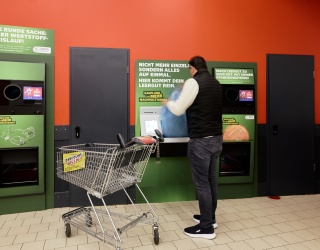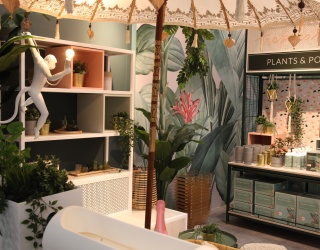
Cooling technology is still a major cost factor in food retail. Just in supermarkets alone, cooling systems are responsible for 40 to 60 percent of the power consumption. Nicolas Wagner, Director of Sales and Cooling Technology Retail Support with cooling systems specialist Carel, explains in our current interview why retailers increasingly rely on integrated cooling systems and what role modern technology plays in energy consumption and in terms of sustainability.
Mr. Wagner, what special requirements does retail have for cooling technology, compared to industrial enterprises for example?
The difference compared to industrial cooling technology is the complexity and redundancy of cooling systems in the industry. Retail on the other hand, focuses on simplicity and a high repetition factor. This is realized through a modular design of systems engineering and control systems, which also facilitates quick, comprehensive service.
Retail today is also focusing on sustainability. How does modern cooling technology help to increase energy efficiency and save costs?
Today’s trend at discount stores as well as with hypermarket solutions is headed towards integrated technology. The heat that is being produced during the cooling process can be reused as heat energy at least in the colder regions of Europe. Cooling technology will be increasingly seen as an all-rounder in the supermarket area. Modern cooling technology –supported by network control technology – provides the best prerequisites to optimally link and optimize the sections energetically.
Recently alternative cooling agents like CO2 have become popular. Some companies use brine as a coolant solution for example. What advantages do the different alternatives offer?
CO2 is definitely an excellent choice as a transcritical option considering global warming potential, that being greenhouse gas emissions. However, it is still not applicable as a refrigerant in this version in all regions of the world.
Today, special methods are used to minimize the pressure ratio towards given certain operating conditions. Since R-404A can soon no longer be used as a refrigerant, CO2 has been able to establish itself well in different versions of the entire installation. Investment costs per cooling unit have drastically decreased by now and the technology has also become more manageable. Installation cost of a CO2 facility however is still very high and expensive compared to a traditional facility.
The deciding advantage of using glycol brine as a technology for cooling is that you need to use lesser amounts of it. A hypothetical water quench produces the cooling effect in this case, which can be carried out with any type of cooling agent as a main carrier. This includes natural refrigerants such as propane, propylene, CO2 or other, conventional refrigerants. The installation effort is also very high in this case, but it does not require the same degree of experience and effort as with conventional refrigerant systems.
However, the trend shifts to conventional refrigeration systems with CO2. Time will tell which of the two systems will prevail.
With its PlantVisor, Carel offers a system that controls an entire network of cooling units. What advantages does this system offer compared to alternative control systems?
Right now, the status quo in the industry is the integration of the MPXPRO refrigeration controller with built-in EEV driver for the respective cooling units and the corresponding suction pressure. In addition, there are other various power saving functions to make the operation with the EEV driver even more interesting.
The PlantVisor is a local monitoring solution based on an embedded PC with a software interface to visualize the equipment and operating points. It also permits remote maintenance, HACCP temperature recording and support management in different ways. The advantage of course is the logical connection of equipment to conduct the entire setup in an energy-optimized manner.
Generally, our monitoring network is constructed so functions that are relevant to operational safety are always performed on field devices to avoid problems due to failing bus connections. The monitoring system makes a central overview and control of energy-optimized additional functions possible. The monitoring system gathers all necessary data to analyze and control this data with special energy-optimizing plug-ins. This is why the PlantVisor Pro system is an excellent opportunity to connect individual equipment from refrigeration, air conditioning and ventilation technology as well as other electrotechnical devices.
With CAREL Retail Sistema, Carel has developed a solution specifically for supermarkets. What are its features?
Thanks to the longtime use of different technologies in the food retail area, Carel has gathered an enormous amount of experience. We were able to develop a complete one-stop solution that enables the integration of all relevant requirements from the smallest application all the way to high-efficiency solutions. This is also an important business area for our company: approximately 7 percent of group turnover is currently being invested in research and development to promote the development of the DC inverter or CO2 technology for example. We set up a small test supermarket in our headquarters just for this purpose. Here the newly developed applications are subject to a test under real conditions before they are subsequently being tested in a “real” field test.
Daniel Stöter; iXtenso.com






